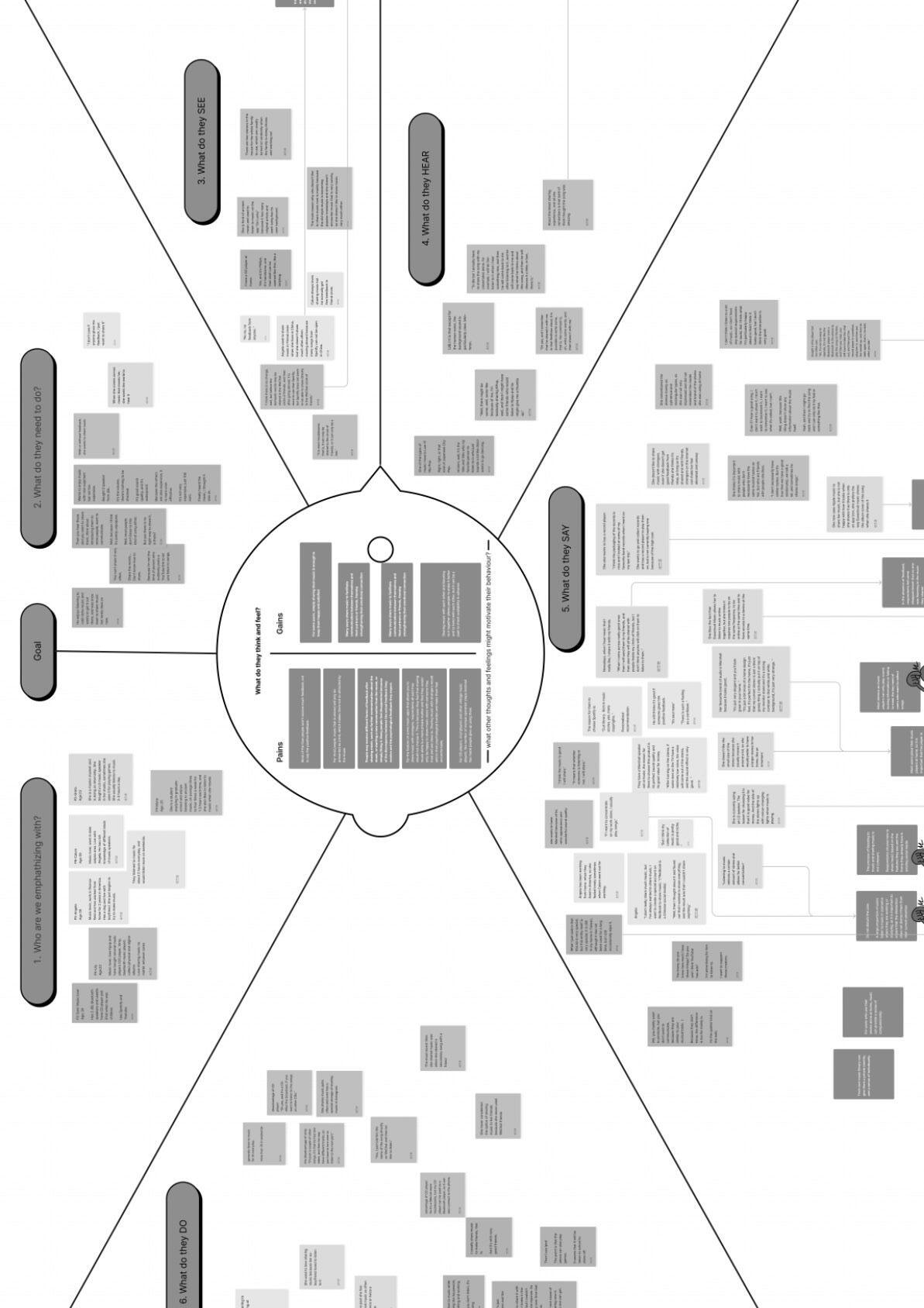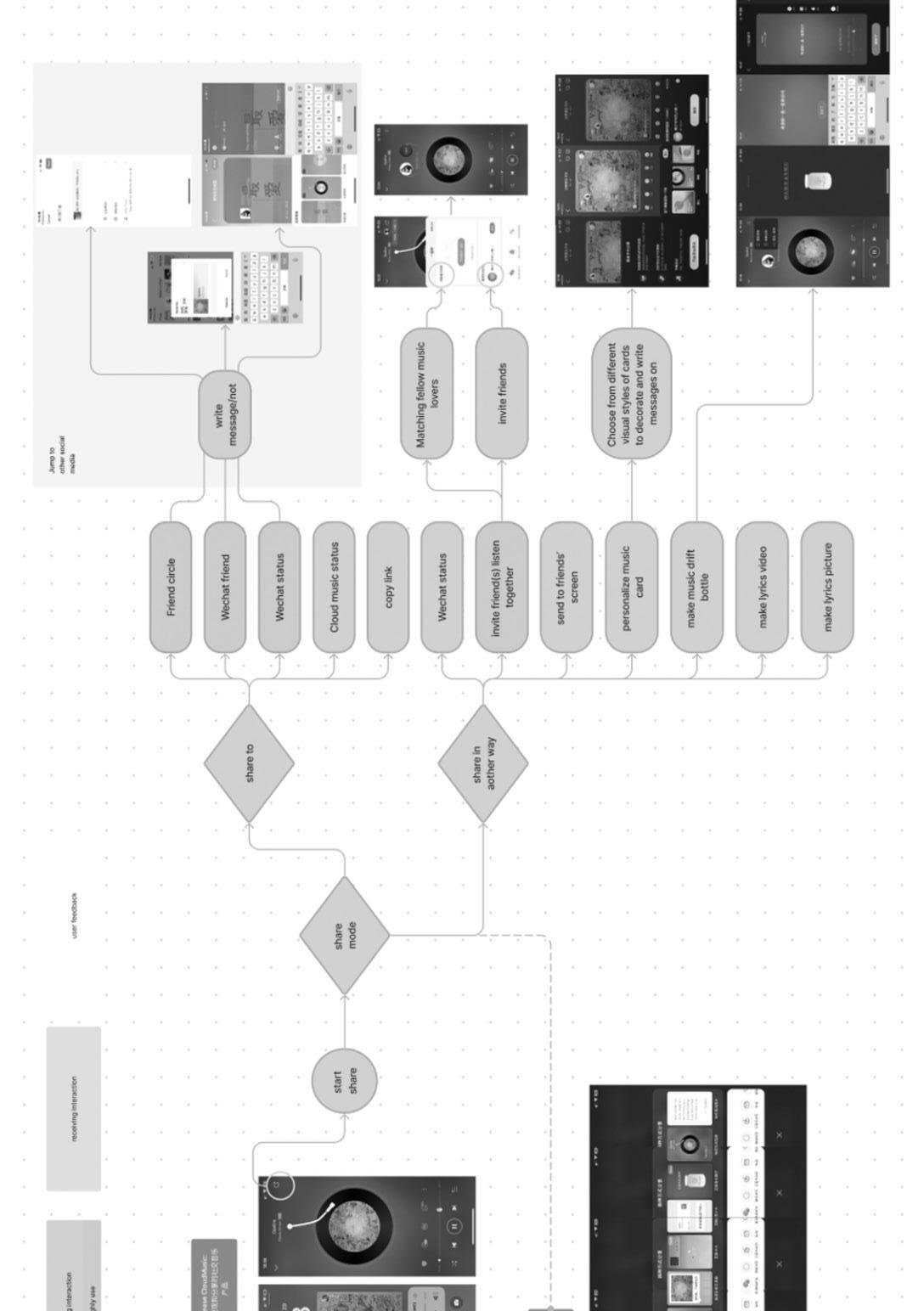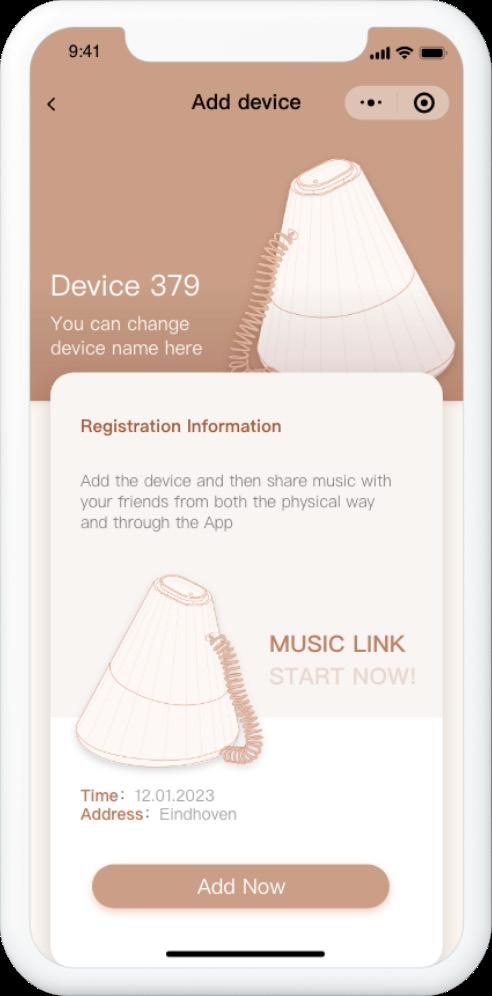
6 minute read
04 DESIGN DECISION
THE ANALYSIS OF THE PREVIOUS DESKTOP RESEARCH AND USER STUDIES PROVIDED A SOLID FOUNDATION FOR MY DESIGN WORK IN THE AREA OF MUSIC SHARING. FOR THIS DESIGN PROJECT, I DECIDED TO WORK IN THREE MAIN DIRECTIONS.
1) IMPROVING THE WAY SHARED MUSIC INFORMATION IS PRESENTED.
Advertisement
The user study's findings make it abundantly evident how important it is to display shared musical information. The sender of the song assumes that the recipient would listen to it, and the recipient might also anticipate the message to be a pleasurable experience and a surprise to themselves. For the person being shared, an attractive music message increases the likelihood that they will open the music. At the same time, due to the audible nature of music, the message should be presented in an appropriate way so as not to disturb the person being shared.
Therefore, the shared music message should be delivered gently to inform the sharer while yet being intriguing enough to pique their interest.
2) BRIDGING THE GAP BETWEEN ENJOYING MUSIC AND SHARING MUSIC.
Currently, popular streaming apps generally require users to switch between social networking software when sharing music and receiving music information, which is inconvenient for both parties sharing music to a certain extent. However, some apps with a social focus on music are overexploited with social features that add to the browsing and usage burden of users.
This project aims to return to the original concept of music socializing, creating social features that are moderate and smoothly connected to the music itself to help users share and communicate better.
3) INTEGRATING THE PHYSICAL INTERACTION FEATURES WITH THE ADVANTAGES OF STREAMING MUSIC.
Streaming platforms can provide users with a convenient and easy way to access a huge music catalogue. This design will attempt to create upon the streaming music application and design an accompanying music sharing service for it. Preliminary research has shown the impact of tangible features on the hedonic consumption experience and the engagement with the music experience, particularly in facilitating an emotional connection between the user and the service recipient. As a result, this project's design prioritises the exploration of interactive strategies for physical music sharing, with the associated streaming service component serving as background assistance.
In particular, beyond these three design themes, I expected to use the artifacts from this project to explore how to provide users with appropriate feedback mechanisms during the music sharing process. The results of the user interviews show that each user has different expectations for the quality of feedback, and that the difference between the expected and actual feedback is a major disincentive to sharing music. Therefore, creating appropriate feedback mechanisms for users is an important part of building a suitable music sharing service. In this project, I will remove this feature and further investigate the need for a feedback mechanism in the music sharing process through the feedback generated by subsequent users using the product prototype, as well as finding out what kind of feedback is appropriate for the majority of users through their own requests.
5.1 PERSONA
Creating a persona can help designers better define the scenarios for a product or service from the perspective of the target users [17]. Based on the findings from the user interviews, I constraucted a user portrait of Anna, a data analyst who lives she was an adolescent, to further define the needs and values of the target group. The persona is shown in figure 8. In recent years, she has been sharing less and less music with her friends. She still has a strong desire to share but feels embarrassed

5.2 IDEATION
Firstly, I envisioned the musical life of the virtual user Anna and imagined the various situations she might encounter in the actual music sharing scenario. Combining the analysis of the previous studies, I designed a new interaction flow as a framework for sharing and receiving music information as the basic structure for conceptualizing the subsequent design solution. The specific interaction flow is shown in Figure 9. During this design process, I identified a number of interaction points where there was strong uncertainty in the design. For example, I could not know whether users would need feedback, whether users would need to send their thoughts while sharing music information, whether a loopable feedback mechanism would lead to an over-socialization of the product, and which kind of interaction for communicating would be more interesting for the user, verbally or through movement.

Next, I used brainstorming to get more specific with my ideas. I firstly made a Mood board by collecting many pictures that could be linked to music and the sense of connection (Seen in Appendix C). Then I made a number of quick sketches to spread the inspiration. These solutions were based on the three design decisions summarized above. All of the design solutions use the physical product as the vehicle for interaction, while the music library is built on a streaming service. Ultimately, I have grouped all the designs that emerged from the brainstorming into two main categories.
1) AN INTEGRATED DESIGN FOR A STEREO WITH THE ABILITY TO SHARE AND COMMUNICATE MUSIC
2) AN ACCESSORY TO THE STEREO, DESIGNED TO COMPLEMENT THE MUSIC PLAYER THAT THE USER OWNS TO SHARE MUSIC.
Considering this project as an initial experiment in the physical design of a shared music process, I decided to adopt the second design direction. As the speaker accessory is smaller in size and more focused on the sharing of music itself from a product design perspective, it was more suitable as a stepping stone to physical music sharing design in the initial exploratory phase.
In order to choose a better solution for further development, I asked my coach , Professor Joep Frens, and four design students to discuss the numerous design solutions created by the brainstorming process separately. In the end, I chose to use the vintage telephone handset and the paper cup sound transmission as inspiration to distill the abstract interaction and physical form. These two objects provide a sense of connection, a sense of ritual, a retro feel that many young people aspire to in modern times, and a perception that is barely different for users from different countries.
Fig.10,16,17,19 - Old telephone and paper cup inspiration



Fig.11,15 - Flower inspiration
Fig.12,13 - Vinly inspiration



Fig.19 - Wind chimes inspiration




5.3 ITERATION
To further define the shape of the product and the form of the interaction, I first made a few simple models out of cardboard to initially determine the size of the product for placement in a common user scenario and for gripping. As is seen in Figure 20. I then chose to use the feature from the retro telephone rotary dial to design an interaction to select target audiences from the address book to share. In order to create a better physical interface for this interaction, I chose to create some 2D designs in Illustrator to refine the interaction screen, and print out some low-fidelity prototypes quickly through modeling and 3D printing techniques to test. During this process, I sketched and modeled a number of 3D-printed models based on how they felt in use and their actual visualization, and then 3D printed them in a continuous iterative process. They can be seen in Figure 21 and 22.The final refined sketches from this process are shown in Figure 23.





5.4 TECHNICAL REALIZATION
During the physical prototyping phase, I wanted to implement as many of the interactive features of the final design concept as possible for better user testing. The overall prototype was modeled and then produced using 3D printing technology, and adjustments such as sanding, and cutting were made for better presentation.
Depending on the availability of electronic components and familiarity with my programming skills, some design features were slightly adjusted in appearance. The final design is physically divided into two main parts, the top and bottom.
The top half of the structure, from top to bottom, is made up of a button that the user presses to pair and connect to the phone via Bluetooth when the product is first initialized, an LED strip to remind the user that a music sharing message has been delivered, a speaker and amplifier to play the sound, and a spiral coil that connects the wires from the button, LED strip, and audio components to the ESP 8266 chip in the bottom half for circuit control and power supply.



The bottom half of the structure, from top to bottom, is: the screen, which displays the names stored in the phone's music sharing contact; the rotary button, which controls the switching of the selected music sharing recipient as the user rotates the button along the slide, and sends it to the current recipient when the button is pressed, at which point the screen will also display "Sent" to alert the user. The ESP 8266, which is connected to the power supply to power the entire circuit, controls the connection of the internal circuit between the rotary button and the screen, as well as the LED strip and audio components in the upper part.







